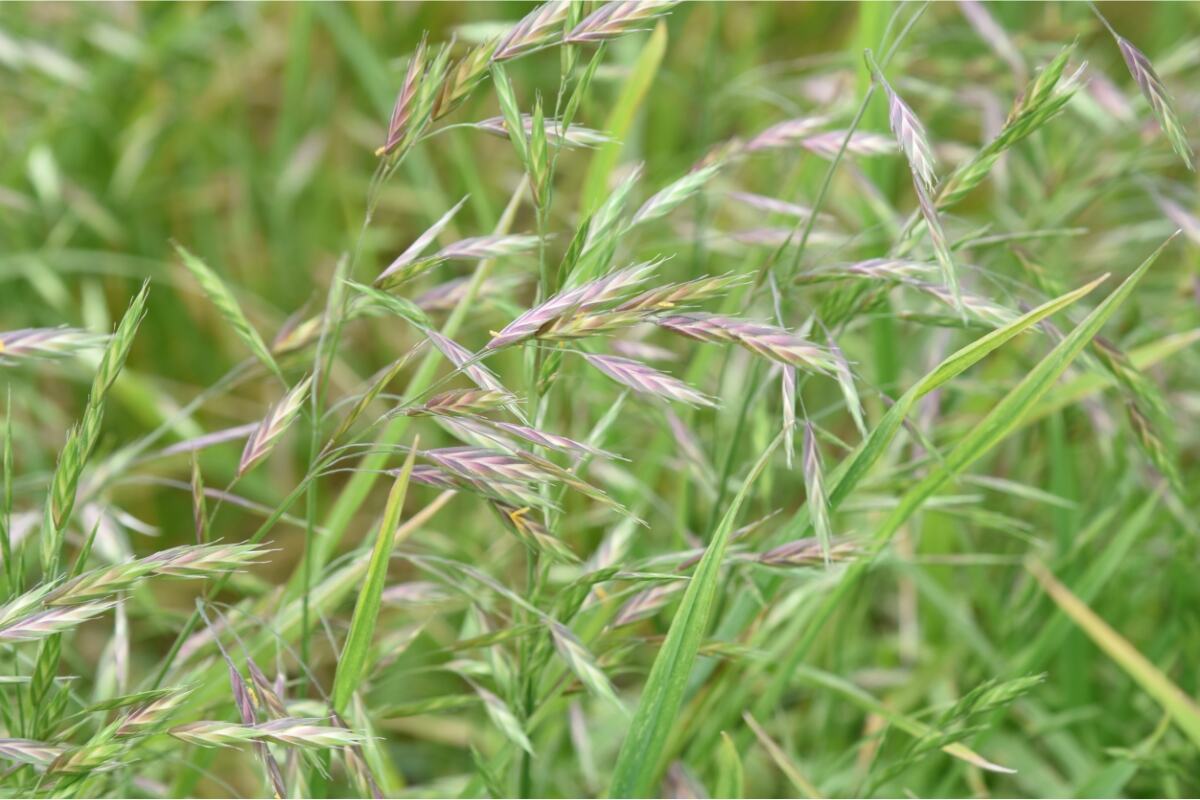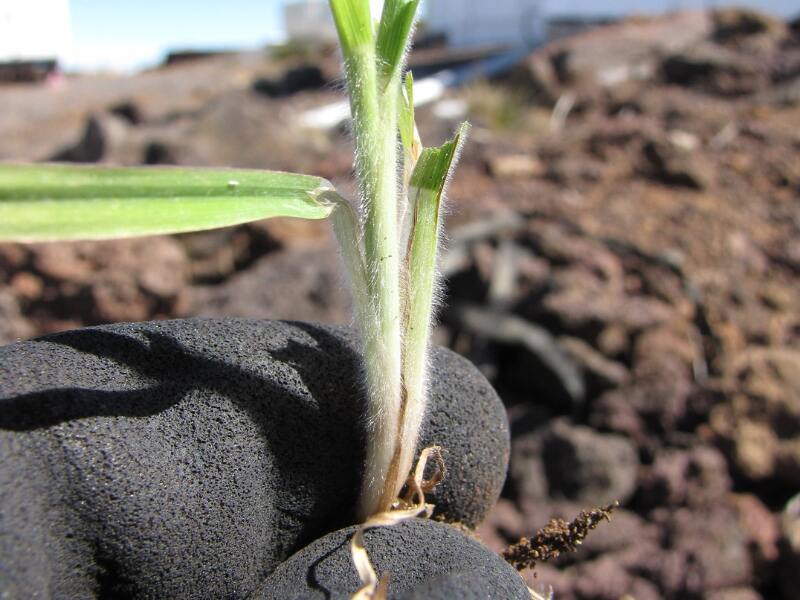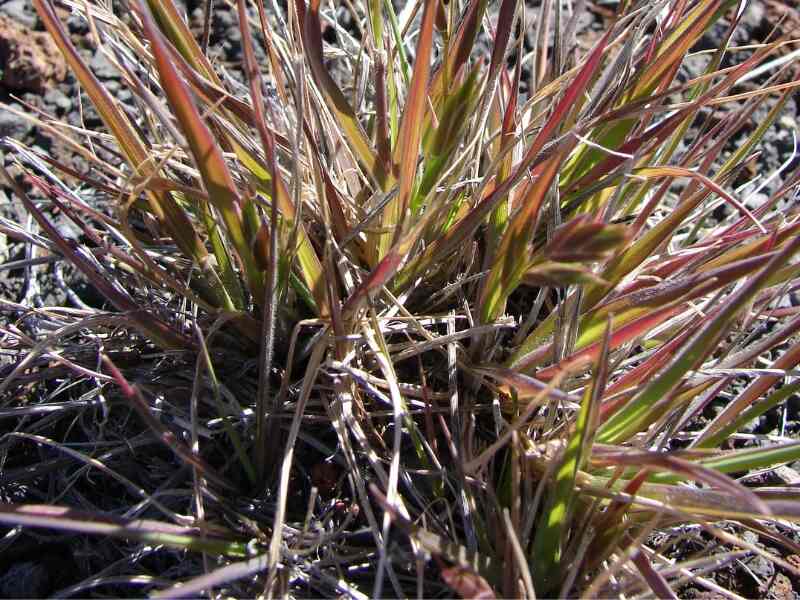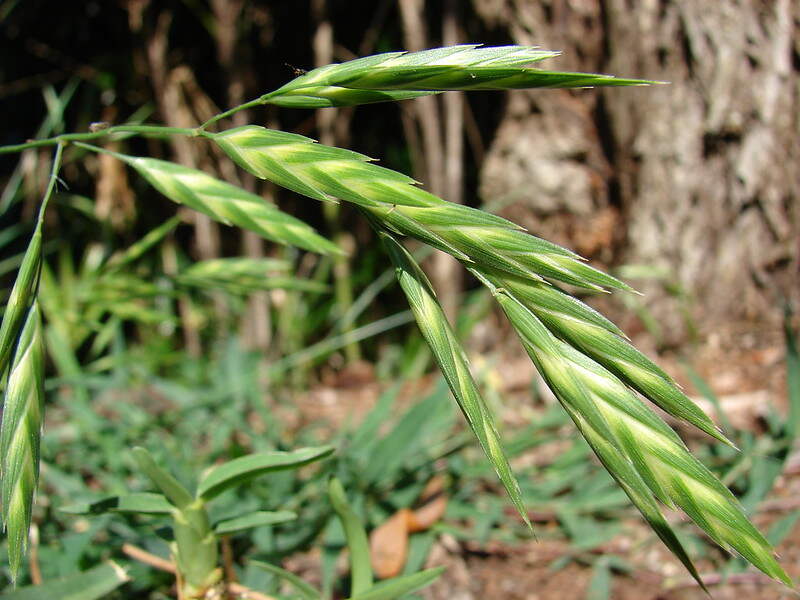
Are you tired of battling the relentless invader known as rescue grass? If you live in the southern states and have experienced its unwelcome presence during cold, dry weather, you’re not alone. But fear not! In this article, we’re about to reveal the secrets of how to get rid of rescue grass, from applying herbicides to hand-pulling.
Rescue grass is a cool-season annual grassy weed that spreads its seeds as the temperature drops — sometimes, even if you’ve applied pre-emergent herbicide in fall. But don’t let its resilience intimidate you any longer. We’re here to equip you with all the knowledge and strategies necessary to regain your turf’s lush, weed-free glory.
What is Rescue Grass?

Bromus catharticus, known by its common name of rescue grass, is a cool-season annual grassy weed that has made its mark as a common intruder in the southern United States. It is commonly found in golf courses, roadsides, prairies, and waste areas.
It is a resilient and adaptable plant that thrives in the cold, dry weather of winter and early spring, only to wither away in the scorching heat of summer. When resources are scarce, this weed can even grow with a shallow root system to maximize its chances of survival.
One key feature that distinguishes rescue grass from other common grassy weeds like crabgrass is its leaf structure. Rescue grass has slightly hairy leaves on the upper surface, while the underside is smooth. As it matures, rescue grass produces flowers that transition from white to light green when they are ready to seed, making it easier to spot in your lawn.
Interesting fact: The name “rescue” in rescue grass hints at its unique characteristic — this weed has the ability to provide a lifeline for grazing animals during times of winter food scarcity, which is why it is also called prairie grass.
How to Get Rid of Rescue Grass

Apply Weed Killers
When you face a rescue grass invasion in your lawn, one of the most common and effective approaches to tackle this pesky weed is by applying herbicide. Here are a few tips:
- Timing is key in this battle, as rescue grass thrives during the cold months of winter and early spring. To maximize your chances of success, spot-treat the new weeds with herbicides from January to early March.
- Glyphosate-containing herbicides are often a reliable choice for dealing with rescue grass infestations. Glyphosate targets a wide range of grassy weeds, including rescue grass, making it an effective weapon in your arsenal.
- Ensure the product you choose is a selective grass weed post-emergent herbicide so you kill the already sprouted weeds. Leave the pre-emergent herbicides for prevention during fall.
- Rescue grass can be a formidable foe, and in cases of severe infestations, more than one application may be necessary to completely eradicate it.
- Proper application techniques will help you achieve the best results in your quest to reclaim your lawn from the clutches of rescue grass, so always follow label instructions carefully.
Manual Removal
Manual or mechanical removal, though tricky due to the complex root system of rescue grass, can be an effective method, especially for young plants that have yet to develop their roots.
Here are some things to take into consideration:
- Dig the entire plant, ensuring you extract the root system. Any rhizomes or root fragments left underground have the potential to sprout and produce more weeds.
- Manually remove rescue grass before it begins to flower, as this will prevent the plant from spreading new seeds.
- Tools such as a hand weeder or weed puller can be your allies in this endeavor. These specialized tools allow you to get a firm grip on the weed’s base and extract it along with its roots, minimizing the chances of regrowth.
Mowing
Even if you’ve applied pre-emergent herbicide as a preventive measure, some resilient rescue grass plants may still manage to sneak into your lawn. In such cases, they often come equipped with a weak root system, making them susceptible to the might of the mower.
By mowing the rescue grass before it reaches the flowering stage, you can effectively stunt its growth and prevent it from producing seeds. However, once rescue grass starts to flower and set seeds, mowing becomes counterproductive. Attempting to mow at this stage may inadvertently spread the seeds further, increasing the problem.
How to Prevent Rescue Grass

Lawn Care
Preventing rescue grass from appearing in your lawn is a proactive approach that can save you from the headache of dealing with this persistent weed later. The first step in doing that is by taking care of your lawn throughout the year.
Here are some key steps you can take to keep your lawn rescue grass-free:
- Regular mowing: Maintain a regular mowing schedule to encourage healthy grass growth.
- Aeration: Aerate your lawn to break up compacted soil. This helps oxygen and water circulate more freely, fostering a hospitable environment for your desired grass while making it less inviting for rescue grass.
- Routine fertilization: Regularly fertilize your lawn to provide essential nutrients that help bulk up the grass. A well-fed lawn is better equipped to compete with weeds like rescue grass.
- Proper irrigation: Ensure your lawn receives adequate water, especially during dry periods. Rescue grass has a preference for dry soil, so keeping it adequately hydrated can deter its growth.
- Overseeding: Periodically overseed your lawn to thicken the grass. A thick lawn not only looks lush but also leaves fewer opportunities for weeds to take hold.
Pre-Emergent Herbicides
Just as with other winter weeds, applying pre-emergent herbicides during the fall is the most effective way to fend off the advance of rescue grass. Pre-emergent herbicides work by forming a barrier in the soil that prevents weed seeds from establishing and becoming a nuisance in your lawn.
To effectively prevent rescue grass, consider making two well-timed applications of pre-emergent herbicides. The first application should be in late September, just as the cooler fall weather begins.
However, rescue grass can be tenacious and may also germinate during winter. To address this possibility, a second application of pre-emergent herbicide in November is advisable. This second treatment fortifies your defense, ensuring that any late-germinating rescue grass seeds are also kept in check.
Mulching
While mulching may not be the most common approach for tackling rescue grass, it can be a smart strategy if you consistently battle this weed and others in your flower or garden beds year after year.
Mulch creates a barrier against weed growth by blocking the crucial element that fuels their germination: sunlight. But how deep should mulch be? To employ mulch as a weed deterrent effectively, lay down a layer that’s approximately 2-3 inches deep.
Mulch offers several advantages in addition to weed control. It helps retain soil moisture, regulates temperature, and provides an attractive, tidy appearance to your garden beds.
FAQ About Rescue Grass
Is Rescue Grass Invasive?
Yes, rescue grass is considered invasive. Originally native to South America, it was introduced to North America as a forage crop. However, over time, rescue grass has proven to be highly adaptable and aggressive in its growth habits, which has led to its classification as an invasive species in numerous regions around the world.
How to Identify Rescue Grass?
Here’s how to identify rescue grass:
- Growth habit: Rescue grass typically grows in a tufted, upright fashion, reaching heights of up to 3 feet.
- Stems: Rescue grass’s stems are green, often flat or oval in shape, and it has long, slender leaves that can stretch up to 14 inches in length.
- Leaves: One key feature to look for is the texture of its leaves. The undersides of rescue grass leaves are smooth, providing a contrasting texture to the slightly hairy upper side.
- Ligule and auricles: Examining the ligule, a membrane-like structure where the leaf blade meets the stem, can be useful for identification. Rescue grass typically has a tall, silvery, cellophane-like ligule. It lacks auricles, which are tiny appendages found in some grasses.
- Flowers and seed heads: Rescue grass produces unique open panicle flowers that tend to droop. These flattened spikelets consist of several branches with green flowers that eventually transition to a white, light green, or tan color when they are ready to set seed.
How to Differentiate Crabgrass from Rescue Grass?
Crabgrass and rescue grass, while they may appear similar at first glance, differ in their growing seasons and temperature preferences. Crabgrass is a summer annual weed, so it typically begins to appear in early spring and thrives in warmer temperatures. On the other hand, rescue grass prefers cooler weather and will appear during fall and winter.
Call in the Pros
Rescue grass, with its tenacious presence and invasive tendencies, can indeed create a frustrating eyesore in your lawn. However, armed with the knowledge and strategies shared in this article, you can take action and fight back against this weed.
If you find yourself weary of the fight or dealing with a particularly stubborn infestation, it may be time to bring in the professionals. Local lawn care experts possess the knowledge, tools, and experience needed to tackle rescue grass and other weeds effectively, restoring the beauty of your outdoor space.
Main Photo Credit: undefined undefined / Canva Pro / License
LawnStarter participates in the Amazon Services LLC Associates Program and other retailer affiliate programs. LawnStarter may earn revenue from products promoted in this article.